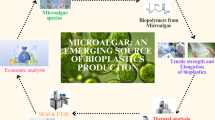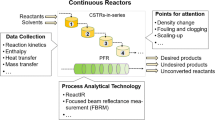Conclusion
The model presented above covers the basic physical and chemical processes in synthesis of polyesters. It describes the method with DMT and TPA in a wide range of parameters and compositions and simultaneously considers the processes in the final reactor. The model is a tool for optimizing the parameters of the process and designing reactors and thus deepens knowledge concerning synthesis of polyesters. It points out the path to new technical solutions, improving the conditions of the process, increasing the economy and output, and improving product quality.
It was possible to decrease the number of reactors for Karl Fisher's continuous method of production of PET to four based on the parameters of the process conducted in existing installations and model calculations. For the method calculated for three reactors [5, 6], the model has serious drawbacks with respect to product quality, economy, and flexibility of the installations, which probably restrict the use of such a system to lower-quality products.
In addition, the model provides for increasing the individual line output from 180–200 tons/day to 300 or even 400 tons/day.
Similar content being viewed by others
References
E. Van Endert, “Technological improvements in continuous PET plants,” Man-Made Fibre Year Book (CTI), 28–32 (1986).
H. Luckert and W. Stibal, “Process comparisons and aspects regarding economy on continuous flexible PES plants,” Man-Made Fibre Year Book (CTI), 38–42 (1990).
H. D. Schumann, “Polyester polymerization,” Text. Asia, 22, No. 5, 86–89 (1991).
P. Deuflhard, Newton Techniques for Highly Nonlinear Problems — Theory and Algorithms, Academy Press, London (to be published).
C. H. Ho, “The advantage of continuous polymerization direct spinning opposite to batch polymerization and screw melter spinning,” Man-Made Fibre Year Book (CTI), 44–51 (1988).
Y. A. Yang, “A comparison between polyester techniques of five foreign companies,” Syn. Fibre Ind., 15, No. 5, 52–57 (1992).
Additional information
Translated from Khimicheskie Volokna, No. 4, pp. 9–14, July–August, 1994.
Rights and permissions
About this article
Cite this article
Van Endert, E., Hagen, R. Development of an existing method for fabrication of polyesters by modeling of the process. Fibre Chem 26, 210–215 (1995). https://doi.org/10.1007/BF00548378
Issue Date:
DOI: https://doi.org/10.1007/BF00548378




